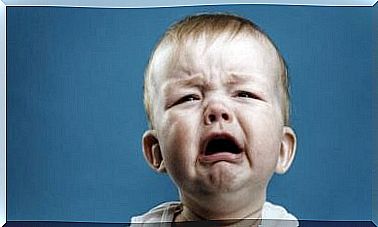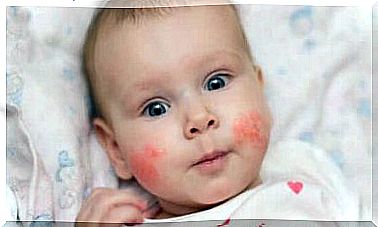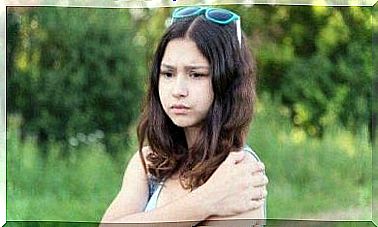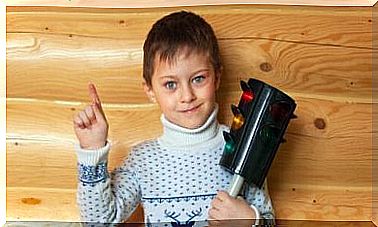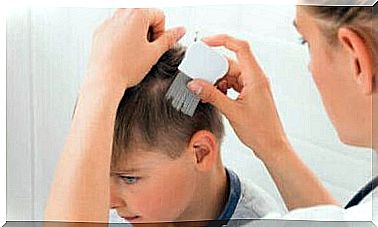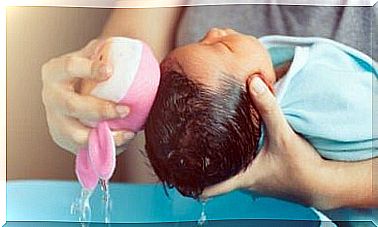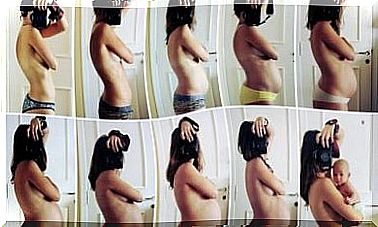Mongolian Spots In Babies: Causes And Treatment

Mongolian spots in babies are also known as dermal melanoses, which is actually the correct term. It is usually just one, large, dark spot, which is often found in the gluteal area. Fortunately, it is a benign condition and it disappears with time.
In this article we will talk about its main characteristics and we will mention certain diseases that can occur at the same time. If you think this is an interesting topic, you should read along.
What are the characteristics of Mongolian spots?
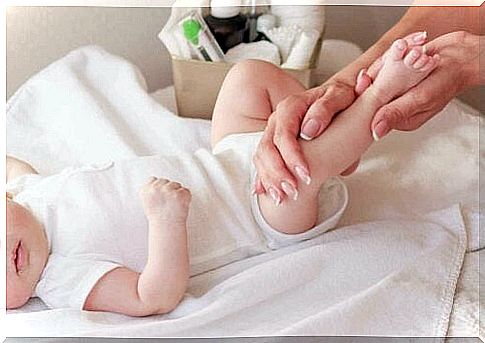
These lesions usually attract the attention of parents.
The first time this lesion appears, parents may confuse it with a hematoma that develops when small blood vessels under the skin tear or rupture due to an injury. This is because mongol spots are purple or brown spots that can reach sizes of more than five centimeters.
In addition, these spots are common, have an irregular shape (especially in the case of children with darker skin color), do not change in temperature and do not cause pain.
They can appear from birth or in the first weeks of life. Therefore, we can say that this condition affects newborn babies in their first month of life. Although they are usually located in the gluteal area, they can occur on the limbs or other areas of the body.
Why do these spots occur?
It is easier to understand the origin of these spots when we analyze its medical term: Dermal melanoses. Do you know what melanoses are? They are special skin cells that contain melanin, which is the main pigment responsible for the various skin tones.
When these cells are destroyed by an autoimmune reaction, people actually suffer from vitiligo. In this case, people have spots of different sizes that are pale in color, which is due to the loss of these cells.
Melanocytes are found in the epidermis, which is the most superficial layer of skin. During embryonic development, some of these cells are located in a deeper layer: the dermis. When these cells are not created in time, this condition can develop. Therefore, it is innate.
Does it relate to other diseases?
Yes it does. Although these lesions do not have a pathological connotation, pediatricians sometimes take samples to find out if it involves other conditions. Some of these can be:
- Hurler syndrome: It is also known as mucopolysaccharidosis type 1, which is a congenital metabolic disease. In this case, some molecules stop working, causing an accumulation of certain substances in various tissues. As a result, this causes problems in growth and psychomotor development.
- Sturge-Weber syndrome: When this happens, a hemangioma (a tumor that affects blood vessels) appears and people suffer from seizures and metabolic disorders.
These are considered rare diseases. Therefore, it can be difficult for doctors to diagnose them unless patients have multiple symptoms.
Can Mongolian spots be confused with other conditions?
Yes, they can. In fact, there are many diseases within dermal melanocytosis that share characteristics in terms of the way they look. This would be the case with the nevus.
Neurofibromatosis is another disorder that can be confused with Mongolian spots. This is because its main symptoms are the appearance of dark spots on different parts of the body. However, this disorder can cause neurological complications over time.
Another important characteristic of Mongolian spots is that due to their resemblance to bruises, they may appear to be signs of child abuse. Therefore, it can lead to various conflicts. Nevertheless, since these spots take a very long time to disappear, doctors usually diagnose them correctly.
Is there a treatment?

It is very important to go to the doctor.
Mongolian spots do not require specific treatment because after a few years they disappear spontaneously. Some specialists may recommend avoiding sun exposure. In addition, laser treatment can be quite helpful if the spots do not disappear after adolescence.
A common and remarkable lesion
Although it is a benign condition, go to a pediatrician or dermatologist as soon as you notice these spots, especially if your baby has other symptoms. Remember not to use natural medicine to treat this condition as it may make the situation worse.
